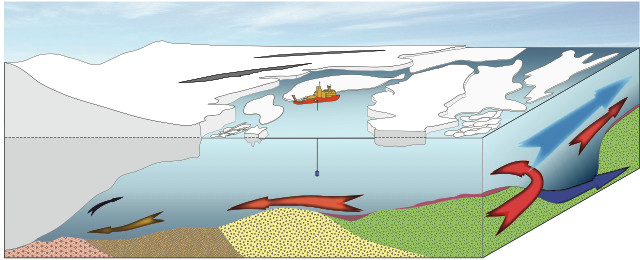Li Ling – Jan 03:
During today’s talk, Julia showed us a geologist’s view of the Antarctic glacial history from ~36 million years ago to the present day. Equipped with this knowledge, I feel like I again gained better knowledge of why scientists are keen on studying the Thwaites Glacier. The continent of Antarctica is divided by the Transantarctic Mountains into two parts, the West Antarctic Ice Sheet (WAIS) and the East Antarctic Ice Sheet (EAIS).
A geologist’s view of Antarctica:

(Source: Julia’s presentation slides)
One fundamental difference between the east and the west ice sheet is that in the east (EAIS), the ice sheet is terrestrial based, fasten to the old Antarctic continental crust. The ice sheet sits on land, doesn’t have much interaction with the ocean and is, for the most part, relatively stable.
The western side (WAIS), on the other hand, was formed by four islands crushing into the Antarctic continental crust and eventually attaching themselves to it. This means that there are low oceanic crust within WAIS. The ice sheet here is largely marine-based, sits largely on lower crust that is submerged in ocean. Since the base of WAIS is below sea level, the ocean can carry warm water streams, melting away the ice from the base of the ice sheet.
So much for today. For more updates on projects onboard the NB Palmer cruise 2022, check out the following social media accounts:
– Twitter: ITGC @GlacierThwaites; THOR @GlacierOffshore; ARTEMIS @ARTEMISonICE; gliders for TARSAN @ueaglider; Sea Mammal Research Unit at University of St Andrews @_SMRU_; National Science Foundation @NSF
– Instagram: ITGC @thwaitesglaciercollaboration; National Science Foundation @NSfgov; ARTEMIS @artemisonice